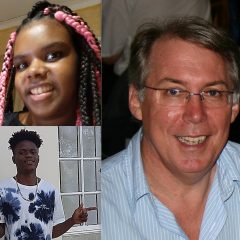Jules Pierre Verreaux (1807 – 1873) was a French botanist and ornithologist and a professional collector of, trader in, and sometimes thief of natural history specimens.
Verreaux worked for the family business, Maison Verreaux, established in 1803 by his father, Jacques Philippe Verreaux, at Place des Vosges in Paris, which was the earliest known company that dealt in objects of natural history. The company was later run by his older brother Édouard. It funded collection expeditions to various parts of the world. Maison Verreaux sold many specimens to the Muséum National d’Histoire Naturelle to add to its collections.
Jules Verreaux began his training in the family business at just 11 years of age, when he accompanied his uncle, naturalist Pierre Delalande, to the South African Cape. They stayed there exploring and collecting from 1818-1820, among their achievements being the first hippopotamus skeleton acquired for the Paris Museum of Natural History. Back in Paris, Verreaux attended anatomy classes under zoologist Georges Cuvier, and began to show an aptitude for taxidermy.
Verreaux worked in South Africa again in 1825, where he helped Andrew Smith found the South African Museum in Cape Town.
No stranger to scandal in his lifetime, while in South Africa Jules Verreaux was summoned to court after a woman claimed to have borne his son. Verreaux had previously asked Elisabeth Greef to marry him, but revoked the proposal. The young mother then brought a suit against him, but lost the case as Verreaux was still a minor at the time of the proposal in 1827.
He was reputed to have set out on the trail of various already extinct and mythical creatures in the Cape, including the unicorn.
More body-snatching: In 1830, while travelling in modern-day Botswana Verreaux witnessed the burial of a Tswana warrior. Verreaux returned to the burial site under cover of night to dig up the African’s body where he retrieved the skin, the skull and a few bones. Verreaux intended to ship the body back to France and so prepared and preserved the African warrior’s corpse by using metal wire as a spine, wooden boards as shoulder blades and newspaper as a stuffing material. Then he shipped the body to Paris along with a batch of stuffed animals in crates. In 1831, the African’s body appeared in a showroom at No. 3, Rue Saint Fiacre. It was later returned and buried in Botswana in 2000.
Jules’ brother Édouard delivered a consignment of collections back to Paris in 1831, and returned to South Africa with the third Verreaux brother, Alexis. Alexis remained in South Africa for the rest of his life, while the course of Édouard and Jules’ lives over the next decade is somewhat confused. Some sources say that both travelled to China and the Philippines and remained there until 1837, but it is also possible that Jules stayed in South Africa during this time. He seems to have returned to Paris in 1838, in which year a large number of his collections were lost in a shipwreck while being transported back to Paris.
In 1864 he took over as assistant naturalist at the Paris Museum. In 1870 he left France at the start of the Franco-Prussian War, seeking refuge in England. He remained there for the concluding three years of his life.
Jules Verreaux left a particular legacy in ornithology. Verreaux’s Eagle (Aquila verreauxii) and Verreaux’s Eagle Owl Bubo lacteus bear his name; More a trader than a scientist, his specimen labels often give only the country of provenance and are sometimes attributed to localities incorrectly, perhaps to make them more commercially valuable, but diminishing their scientific value.
~~~oo0oo~~~
Sources: JSTOR; wikipedia
Anon., 1874, Ibis, 16(4): 467-469
M. Gunn and L.E.W. Codd, 1981, Botanical Exploration of Southern Africa
M. Molina, 2002, “More notes on the Verreaux brothers”, Pula Botswana Journal of African Studies, 16(1): 30-36.




































































































































































